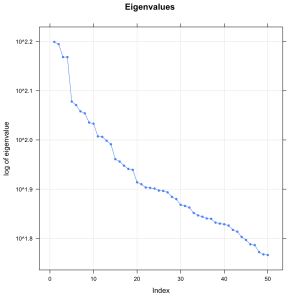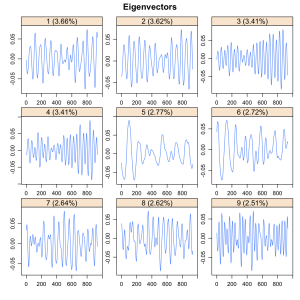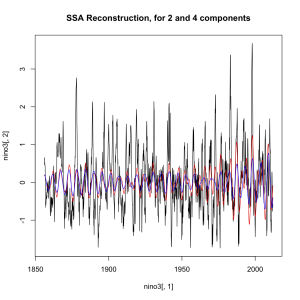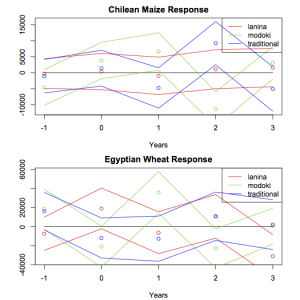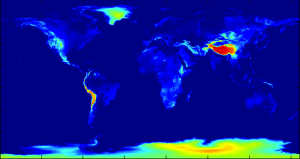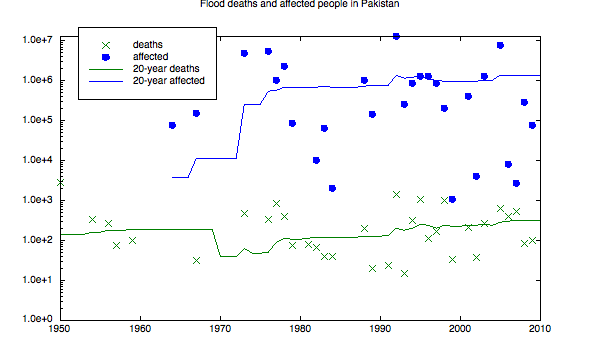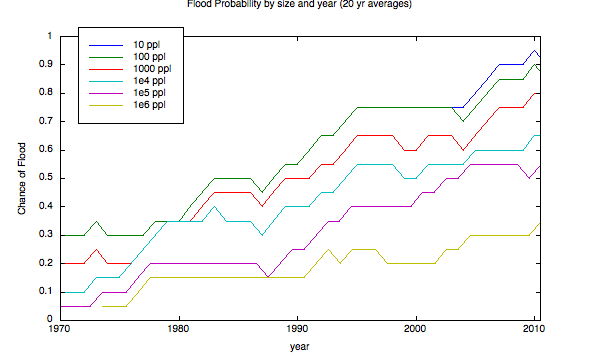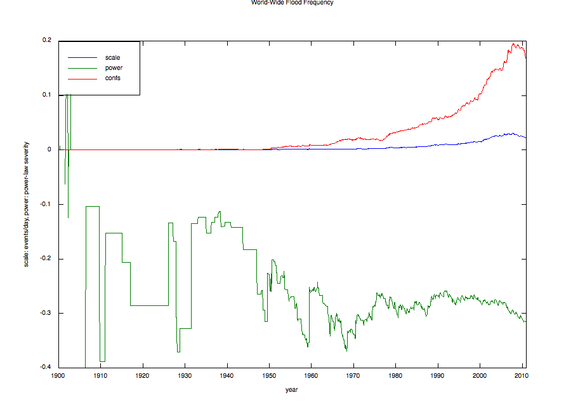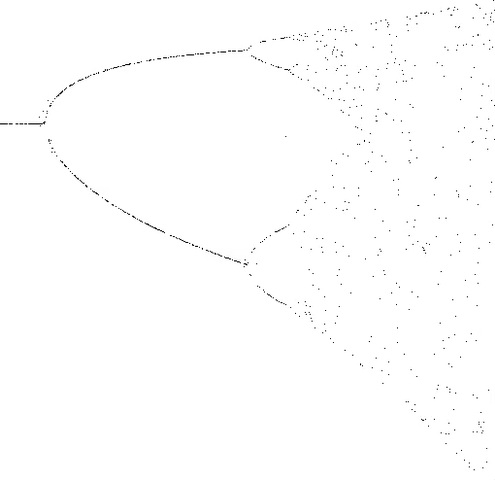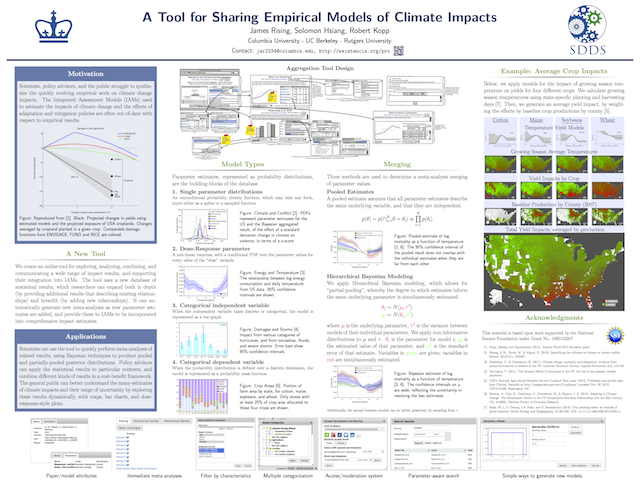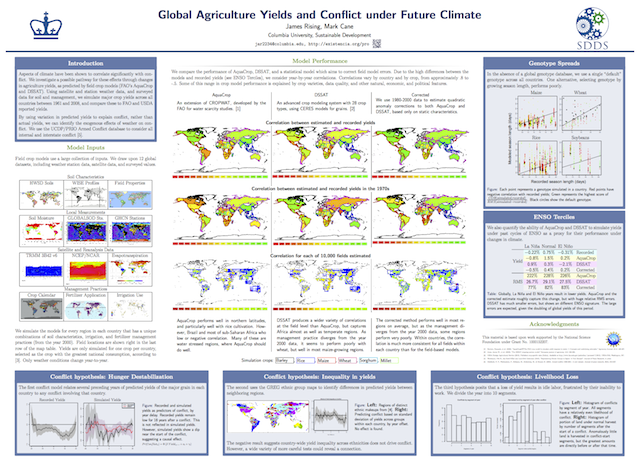NINO 3 is a measure of El Niño/La Niña (ENSO) intensity. It’s often said that ENSO has a period of 3-7 years. Why is it so hard to identify a single period? This is a job for SSA!
The scree plot shows that there are a ton of significant eigenvectors– this is a very complicated signal– but I want to focus on the first four, which are a shade more significant than the rest. They come in two pairs, which for SSA means that they represent two sinusoids. Here are the eigenvectors.
How well do these two capture the ENSO signal?
Not great, but it gets most of the ups and downs. Just not the peaks.
So what are the periods of these two? The first two are at 5.8 years, and the second two at 3.5 years. To note: those are relatively prime, so the two frequencies are always going to be going in and out of sync. So it’s not so much that ENSO has a clear frequency (it doesn’t), nor that that frequency is 3-7 years (because what would that mean anyway). It has two main frequencies, like a dial tone.

